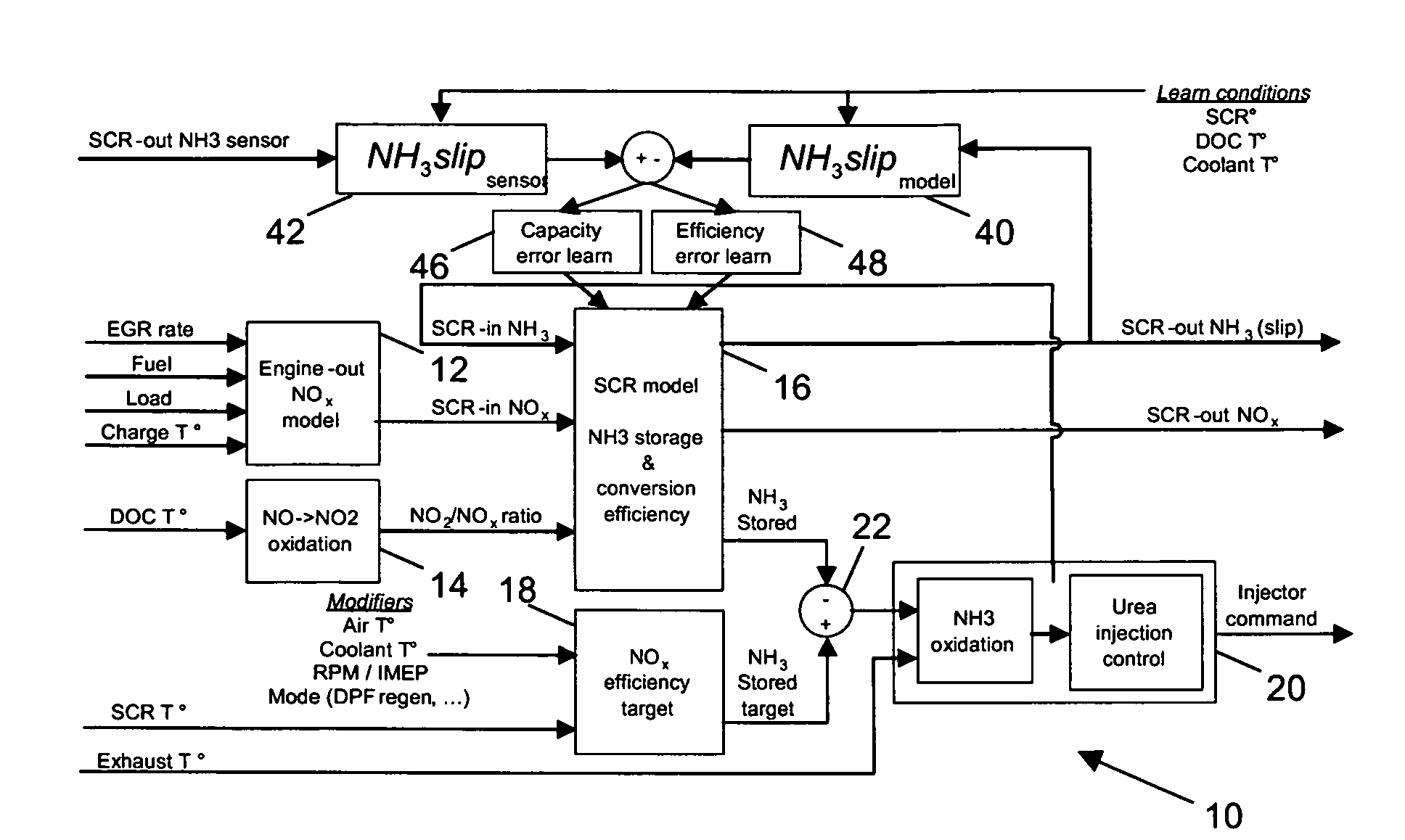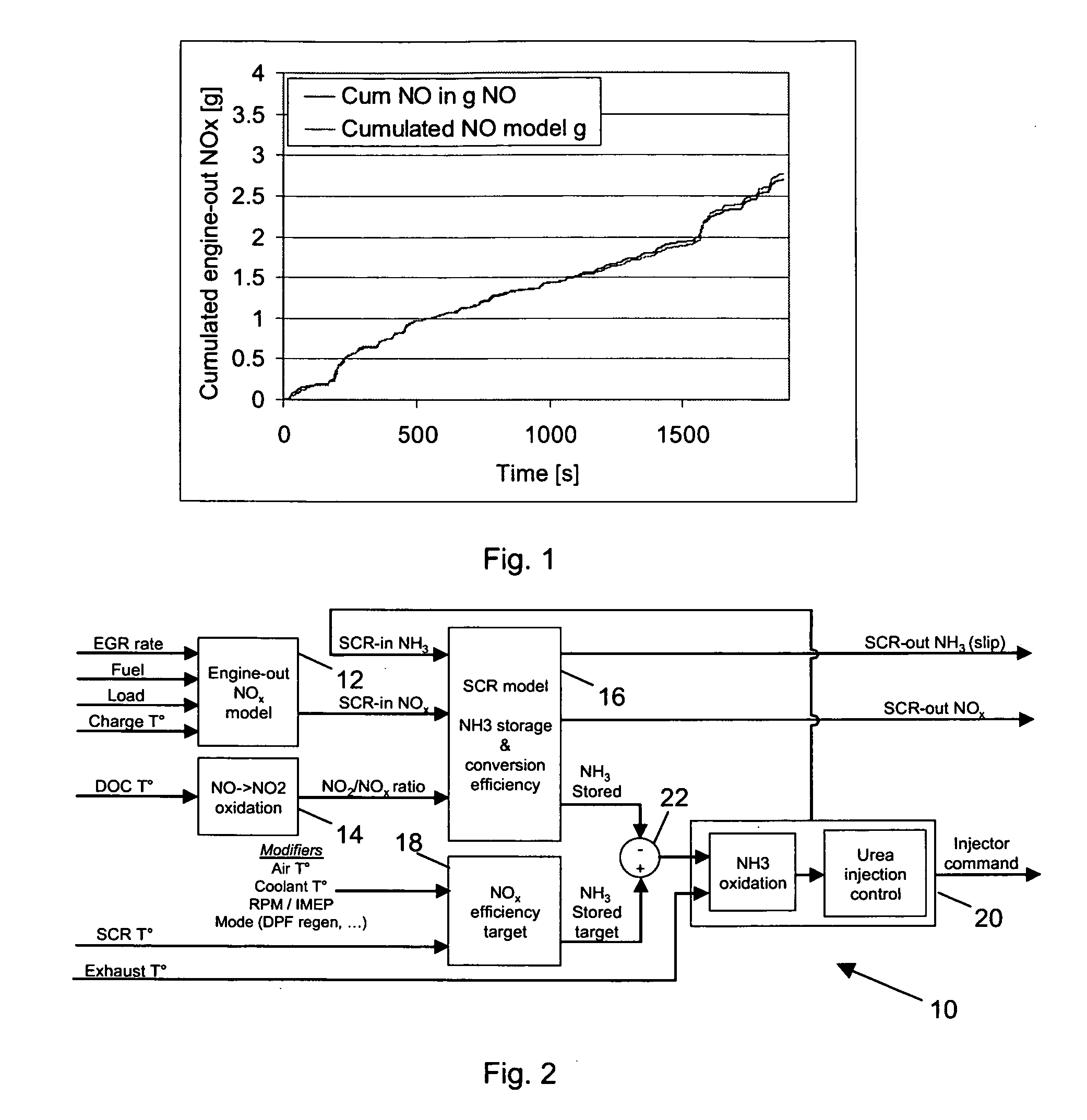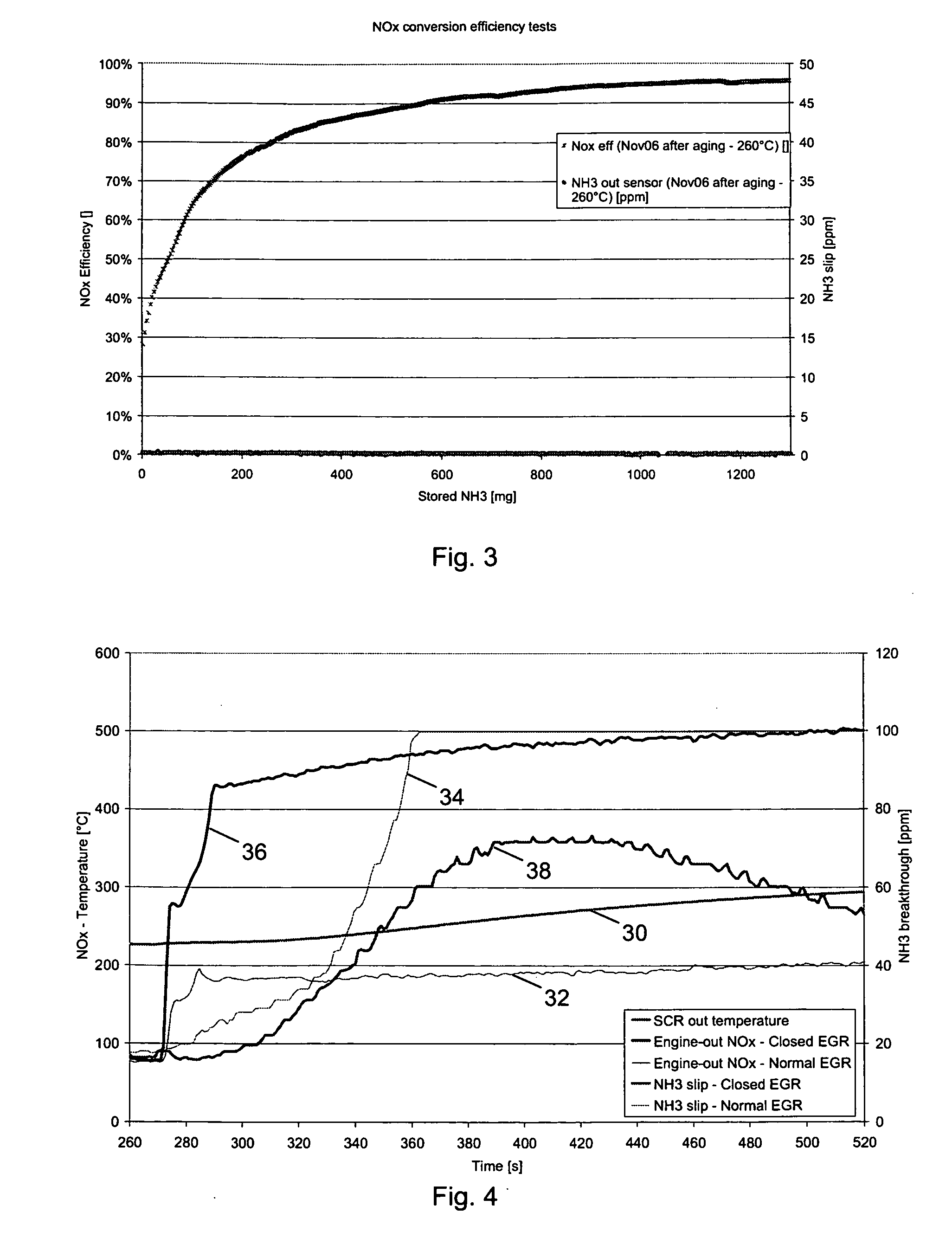System and method for selective catalytic reduction control
- Summary
- Abstract
- Description
- Claims
- Application Information
AI Technical Summary
Benefits of technology
Problems solved by technology
Method used
Image
Examples
Embodiment Construction
[0048]As explained above, the engine-out NOx flow needs to be known to inject the correct amount of urea, as too little gives poor efficiency and too much gives NH3 slip. Prior art systems use a NOx sensor located upstream of the SCR catalyst.
[0049]The present invention uses simplified models to calculate the NOx conversion efficiency of the SCR catalyst and drive the injection quantity of urea required to maintain this efficiency to a certain level. The model can take into account several key parameters including:
[0050]total NOx flow entering the SCR catalyst and NO2 / NOx ratio;
[0051]SCR catalyst temperature; and
[0052]stored NH3 in the SCR catalyst.
[0053]The total NOx flow can be measured by a NOx sensor located before the SCR.
[0054]Alternatively, as used in a preferable embodiment on the present invention, a NOx model can be used that replaces the NOx sensor. The NOx flow is modelled as a fraction of injected fuel flow. This fraction is mapped as a function of engine load (IMEP—Ind...
PUM
 Login to View More
Login to View More Abstract
Description
Claims
Application Information
 Login to View More
Login to View More - R&D
- Intellectual Property
- Life Sciences
- Materials
- Tech Scout
- Unparalleled Data Quality
- Higher Quality Content
- 60% Fewer Hallucinations
Browse by: Latest US Patents, China's latest patents, Technical Efficacy Thesaurus, Application Domain, Technology Topic, Popular Technical Reports.
© 2025 PatSnap. All rights reserved.Legal|Privacy policy|Modern Slavery Act Transparency Statement|Sitemap|About US| Contact US: help@patsnap.com



